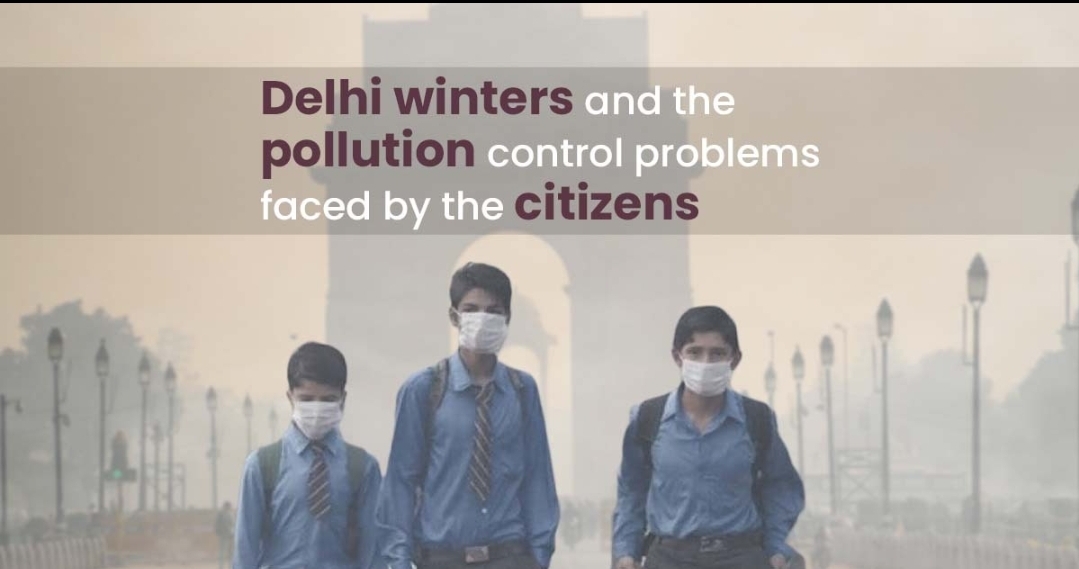The hazardous effect of air pollution in Delhi is one of the biggest concerns for experts and the citizens of Delhi. However, it is imperative to take note of Delhi’s recent air pollution statistics to understand the overall situation and take steps for improvement.
Let us first throw some light on the Air Quality Index and Global air report of Delhi and the various ways the bad air quality is harming the human health, flora and fauna of the city.
Air pollution in Delhi statistics
No single entity is enough for measuring air pollution. Global Air Report analyses the air quality of Delhi based on PM5 and NO2 while the Air Quality Index by EPA (Environmental Protection Agency) measures five major pollutants- ground-level ozone, particulate matter, Carbon monoxide, Sulphur dioxide, and Nitrogen dioxide.
Let’s take a closer look at the condition of Delhi via its recent statistics and know where it stands in the list of most polluted cities.
1. Global Air Report – According to Global Air Report, Delhi has been ranked the worst polluted city in the world. The report was made keeping in mind the PM 2.5 and NO2 however Delhi’s air has more concentrations of PM 2.5. This recent assessment is based on a survey of 7239 cities from the year 2010 to 2019.
2. Air Quality Index – Delhi’s overall Air Quality Index recorded on 1st November 2022 is 385 with the highest AQI of 594 in the Dhirpur Area followed by Noida with 444 AQI. Unlike other reports, AQI measures the daily air quality and gives a fair idea of the potential improvement for the respective city.
Delhi Air pollution effects – Power generation, vehicle exhaustion, suspended dust on roads due to vehicle movement, construction activities, combusting fuels for cooking, and forest and open waste burning are the major reasons behind air pollution in Delhi city. Just as we keep a keen eye on air pollution causes. Similarly, we need to understand its repercussions if we want to see some solid improvement in the air quality of Delhi.
1) Health problems in humans – Whether it is premature deaths from stroke, heart disease, Chronic obstructive pulmonary heart disease, lung cancer or respiratory infections, air pollution is responsible for some of the major lung diseases. Not to forget, the most affected beings by Delhi’s high air pollution are kids and that too from the middle class and lower income group. Adverse impacts on brain development, immune system, CardioMetabolic health and lower birth weight are some serious repercussions of children and expecting mothers’ regular exposure to air pollution. Additionally, around 30 percent of lower respiratory infections in children as well as adults are due to air pollution.
2) Declining flora & fauna – Negative effects of air pollution are not only limited to human health but also flora and fauna. Recently, a surge in lung diseases has been reported in many of Delhi’s veterinary hospitals. Symptoms of nausea, repeated vomiting, eye redness, and slow response are some of the major symptoms observed among stray animals. Similarly, the flora of the city is declining day by day. Air pollution destroys chlorophyll and disrupts the photosynthesis process hence harming the very essence of plant development. On the other hand, sulphur dioxide bleaches the surface of the leaves causing them to become yellow and ultimately decay at the end.
3)Bad water quality- Air pollution in Delhi is directly polluting the surface of the water bodies and soil. As an effect, the quality of the crops and yield of the fields are continuously declining. And the danger of acid rain is rising every day. Acid rain can percolate copper, aluminium, and heavy metals out of the soil and into the drinking water. This in turn increases the quantity of more harmful material in the soil thus making the soil and water quality worse.
4) Economic well-being- Indian business suffers from a loss of 7 crores every fiscal year. This observation comprises 3 percent of India’s pollution and 50 percent of all tax collected annually.
Delhi one of the top cities contributing to Indian business is affected adversely by air pollution. Increased risk of diseases like asthma, diabetes, and chronic respiratory disease leads to a prominent reduction in the workability of the individuals and labor force.
Indeed, the Delhi government took major steps to curb air pollution in the city. Be it collaborating with centres or states for curbing air pollution or installing anti-smog guns or mobile guns, the government is doing its job well. However, we as the citizens of the country should put more effort to control the air pollution in the city.
The responsibility of making Delhi a green city lies not only on the government’s shoulders but ours as well. From using eco-friendly crackers to using electric vehicles with our family and friends, it is we who can do wonders if we take a few steps in the direction of air pollution control.
Sustainable Development Goals – A way to a Green World

Leave a Reply